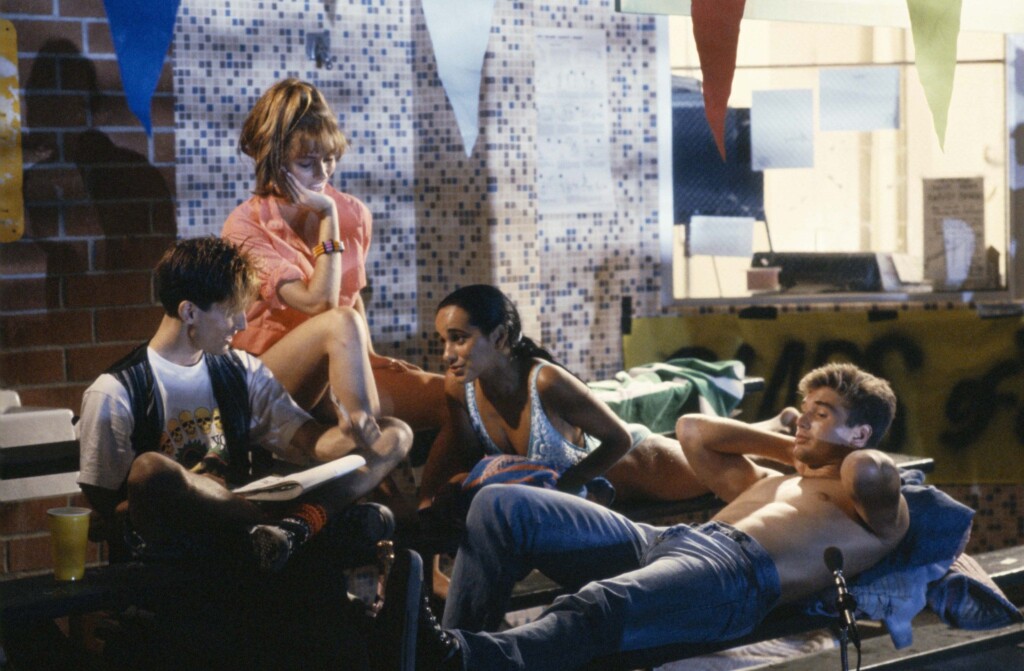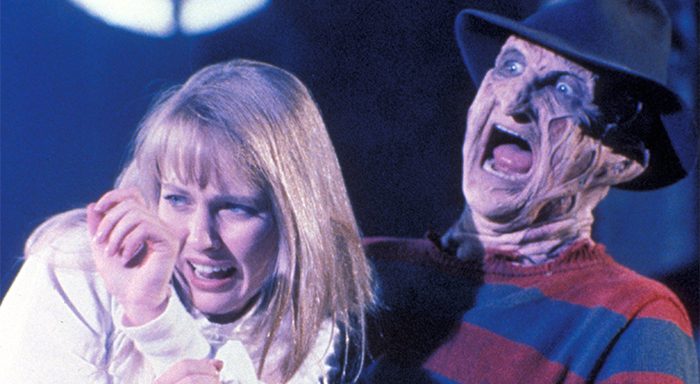“It’s a boy!”
Right off the bat, we should establish that there’s no good reason for A Nightmare on Elm Street 5: The Dream Child to exist. I mean, none of the Nightmare sequels really need to exist, but most horror franchises will be stretched far past their breaking point, and there’s basically no franchise that can survive five-plus installments. Some of you might be thinking: what about the Fast & Furious movies? No, none of those movies are good, and that franchise is for people with brains as smooth as bowling balls. Oddly enough, this franchise’s third and fourth installments – Dream Warriors and The Dream Master – are surprisingly not bad, and help complicate the mythos of the series in a nice way (part two, Freddy’s Revenge, is largely seen as non-canonical). And here’s a weird sentence to write: The Dream Child starts off solid enough, but can’t live up to the standards set by Dream Warriors or The Dream Master.
The Dream Child centers around another group of largely nondescript high schoolers. We first meet Alice and Dan after they’ve finished having sex; Alice gets up to shower and finds it flooding from the drain up. This is actually pretty cool, and leads me to mention the best part of this movie: there’s a lot of cool stuff happening visually. The acting and writing are subpar at best, but I’d be lying if I said this wasn’t at times pretty cool to look at. When Alice breaks through the wall of water, she’s not in her bathroom, but in an insane asylum, wearing a habit with the nametag reading “Amanda Krueger.”

This is a dramatization of Freddy’s gruesome origin story, first outlined in Dream Warriors, which thankfully stops short of showing us how he became “the bastard child of a thousand maniacs.” It also introduces a general conceit of the film, which is Alice’s connection to Freddy. This is never really explained, only depicted, which is kind of frustrating because the whole damn movie hinges on it. I guess you can’t really expect an in-depth explanation five movies deep. The crux of the movie is actually pretty novel: Freddy wants to take control of Alice’s unborn baby so he can wreak havoc again. Well, it’s novel until you think about it for two seconds: one, that’s more or less the plot of Freddy’s Revenge; and two, he wreaks havoc the entire film without the baby.
Leslie Wilcox is fine if unremarkable as Alice, but unfortunately she’s surrounded by people who wouldn’t get a community theater callback. The performances range from middling to terrible, with the worst offender being Joe Seely as Mark. To the film’s detriment, Mark gets a lot of screentime, and nothing he says is clever or well-delivered. It’s one of the most wooden performances I’ve ever seen in anything – like Verotika-level bad – to the point that it almost singlehandedly derails the entire film.
As lackluster as the acting is, by and large, the practical effects are actually pretty cool. Yes, this is a 1989 movie, and yes, a lot of the visual effects are going to look embarrassingly bad by today’s standards. Those CGI tarantulas probably shouldn’t have made it into the final cut. But there are some pretty cool matte paintings, which, to director Stephen Hopkins’ credit, aren’t supposed to look completely lifelike. There’s some pretty cool animated stuff, and the makeup effects are for the most part pretty damn good. I say “for the most part” because there’s no way to put a little kid in Freddy Krueger makeup and have him look anything but ridiculous.
Ah, yes, Freddy: the metric by which any of these movies are judged. It’s no secret that Robert Englund’s performance grows campier with every installment, and that proves true here as well. In the first film, Freddy was a creature literally born of nightmares; here, we learn that he is not only the abominable incarnation of evil itself, but also strangely fond of bits. All of his kills seem ironically fitted to the person they’re inflicted upon; Greta, under pressure to stay thin, is fed to death, while Dan, in a hurry to get to Alice, is killed by a sentient car. This isn’t a bad thing, necessarily, but it lacks the impersonal sadism of the first film. Sorry to keep comparing the two, but that first film is kind of perfect, no?
At this point in any horror franchise, the scares have basically dissipated. So, no, The Dream Child, even at its most nightmarish, is not scary. But it moves at a nice enough clip and Wilcox is charming enough to keep watching. The visuals are cool enough to look past the dreadful acting (except for Seery, good lord). Don’t get me wrong, this movie sucks, but not nearly as much as it could have. That might be damning with faint praise, but when you’re talking about the fifth Nightmare on Elm Street movie, the praise is only ever going to be faint.


